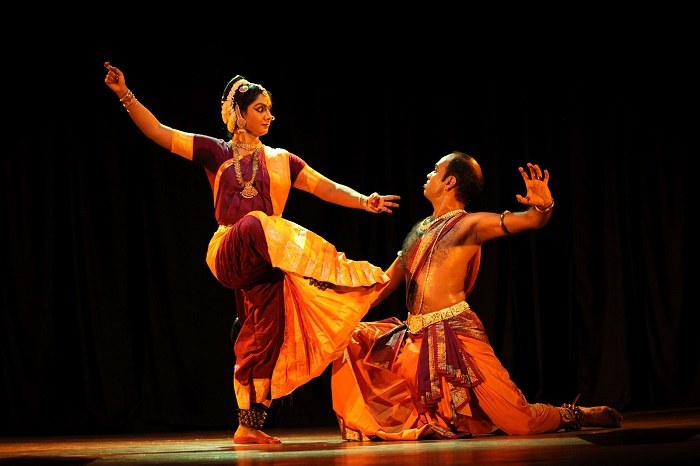தொடர்புடைய கட்டுரை
Kuchipudi
08th Jan 2018

Kuchipudi, a pre-eminent Indian classical dance form counted among ten leading classical dance forms of India, is a dance-drama performance art that originated in a village of Krishna district of Andhra Pradesh, India. Similar to all leading Indian classical dance forms, Kuchipudi too evolved as a religious art rooting back to the age-old Hindu Sanskrit text ‘Natya Shastra’ and connects traditionally with temples, spiritual faiths and travelling bards. This ancient dance form finds place in the 10th century copper inscriptions and in 15th century texts like ‘Machupalli Kaifat’. Traditionally it is regarded that the sanyassin of Advaita Vedanta sect, Tirtha Narayana Yati, and his disciple Siddhendra Yogi initiated, methodized and arranged the present day version of the dance form in 17th century. Usually performance repertoire of Kuchipudi that is broadly oriented on Lord Krishna and the tradition of Vaishnavism include an invocation, dharavu – short dance, nritta – pure dance and nritya – expressive dance respectively. The theoretical foundation of Kuchipudi is rooted back to the ancient Sanskrit Hindu text on the performing arts called ‘Natya Shastra’ which is accredited to Indian theatrologist and musicologist Bharata Muni. It is assumed that the full version of the text was first completed between 200 BCE to 200 CE, but such period also varies between 500 BCE and 500 CE. It incorporates verses in thousands that are structured in different chapters and divides dance in two distinct types that are ‘nrita’ that is pure technical dance and ‘nritya’ that is solo expressive dance. ‘Natya Shastra’, states Russian scholar Natalia Lidova, explicates various Indian classical dance theories including that of standing postures, bhava, rasa, basic steps, methods of acting, gestures and Tandava dance, which is associated with Lord Shiva. Bharata Muni not only mentions the Andhra region in this ancient text but also attributes an elegant movement called ‘Kaishiki vritti’ and a raga called ‘Andhri’ to this region. The raga that is associated with ‘Arsabhi’ and ‘Gandhari’ also finds place in several other Sanskrit texts dating back to the 1st millennium.